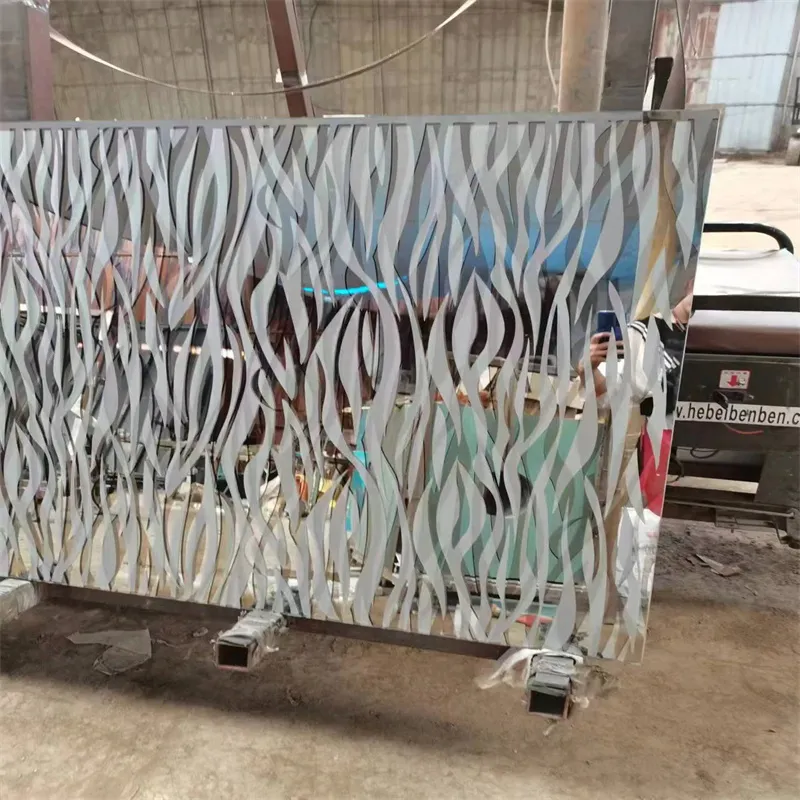Dec . 03, 2024 15:44 Back to list
ir reflective glass
The Benefits and Applications of IR Reflective Glass
Infrared (IR) reflective glass has emerged as a groundbreaking material in architectural design and energy efficiency. This specialized glass is engineered to reflect infrared radiation while allowing visible light to pass through, making it an essential feature in modern buildings. By incorporating IR reflective glass, architects and builders can significantly enhance energy efficiency, improve indoor comfort, and contribute to a more sustainable environment.
Energy Efficiency
One of the primary benefits of IR reflective glass is its ability to reduce heat gain in buildings. Traditional glass absorbs heat from sunlight, which can lead to increased thermal loads on air conditioning systems. In contrast, IR reflective glass effectively reflects a substantial portion of infrared radiation, thereby minimizing heat absorption. This characteristic translates into lower energy consumption for cooling, resulting in reduced utility bills and a smaller carbon footprint. Commercial buildings, in particular, can benefit from this technology as they often have large glass facades that magnify heat gain.
Improved Indoor Comfort
In addition to energy efficiency, IR reflective glass contributes to enhanced indoor comfort. By limiting the amount of heat that enters a space, it helps maintain a cooler and more stable indoor temperature. This is particularly important in climates that experience high temperatures and intense sunlight. Furthermore, the reduction of glare caused by sunlight entering through traditional glass can improve the overall experience for occupants. Whether it’s an office space, a retail store, or a residential building, using IR reflective glass can create a more pleasant environment for inhabitants.
UV Radiation Protection
ir reflective glass

Another noteworthy feature of IR reflective glass is its ability to block harmful ultraviolet (UV) rays. UV radiation can cause damage to furniture, artwork, and other interior furnishings, leading to fading and degradation over time. By utilizing IR reflective glass, buildings can provide better protection against UV radiation, preserving the aesthetic integrity of interiors while also safeguarding the health of occupants. This is especially critical for commercial spaces such as museums, art galleries, and boutiques, where the preservation of visual quality is paramount.
Aesthetic Appeal
IR reflective glass is not just functional; it also offers aesthetic advantages. It is available in various tints and finishes, allowing architects to create visually stunning designs while maintaining energy efficiency. The reflective properties of the glass can create striking visual effects, such as mirrored facades that blend beautifully with their surroundings. This versatility enables architects to push the boundaries of contemporary design while addressing practical energy concerns.
Environmental Sustainability
Lastly, the use of IR reflective glass aligns with global efforts towards environmental sustainability. As more buildings are constructed with energy-efficient features, the demand for fossil fuels and other non-renewable resources can be diminished. By choosing IR reflective glass, builders contribute to reducing greenhouse gas emissions and promoting a healthier planet. Many regulatory bodies and organizations now recognize the importance of sustainable building practices, and incorporating such advanced materials contributes positively to these efforts.
Conclusion
In conclusion, IR reflective glass is a vital innovation in the realm of architecture and building design. By enhancing energy efficiency, improving indoor comfort, and providing UV protection, it serves multiple purposes that benefit both occupants and the environment. Furthermore, its aesthetic appeal allows architects to create beautiful structures without compromising functionality. As the demand for sustainable building practices continues to grow, IR reflective glass will undoubtedly play a crucial role in shaping the future of architecture. Embracing this technology will not only lead to better energy performance but also contribute to a more sustainable and environmentally friendly world.
-
Safety and Style with Premium Laminated Glass Solutions
NewsJun.24,2025
-
Reinvents Security with Premium Wired Glass
NewsJun.24,2025
-
Premium Float Glass Line for Modern Architecture
NewsJun.24,2025
-
Low Emissivity Glass for Energy-Efficient Architecture
NewsJun.24,2025
-
High-Performance Insulated Glass Solutions for Modern Architecture
NewsJun.24,2025
-
Elevates Interior Style with Premium Silver Mirror
NewsJun.24,2025
Related PRODUCTS














